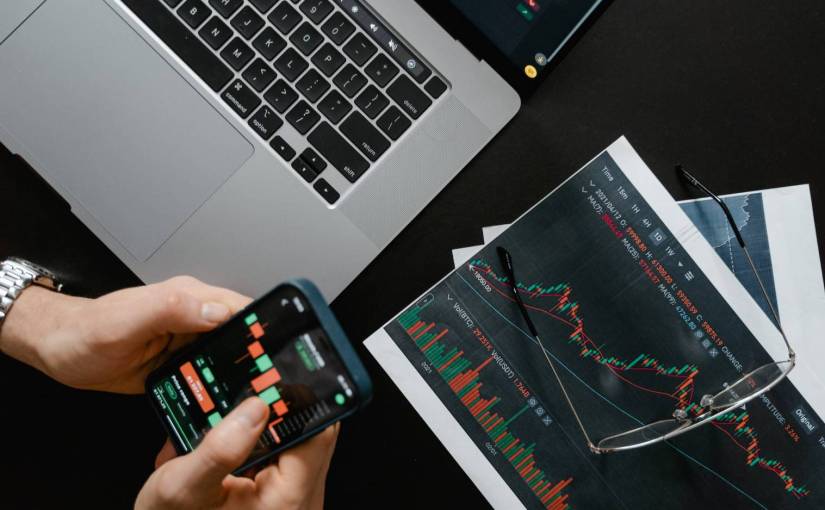Algorithmic trading, or algo-trading, employs advanced mathematical models and formulas to make quick decisions and transactions in the financial markets. The realm of options trading can seem complex and daunting for beginners. This article aims to demystify algorithmic trading options and guide beginners to navigate this complex landscape.
Algorithmic trading options are a method that uses complex algorithms to predict market trends and execute trades accordingly. Options are contracts that give the holder the right, without any obligation, to buy, sell or trade an underlying asset at a set price before or on a specific date.
The basic concepts of algorithmic trading options
Here are some basic concepts of algorithmic trading.
Algorithms
In this context, an algorithm can be defined as a meticulously crafted set of predefined rules that must be followed. These rules are carefully formulated based on various factors such as timing, price, quantity, or even complex mathematical models.
Once the coded strategy embedded within the algorithm is satisfied, the trade is executed seamlessly, eliminating the need for human intervention. By relying on these sophisticated algorithms, traders can effectively harness the power of automation to optimise their trading strategies and make informed decisions promptly.
Trading strategies
In the algorithmic trading world, many options employ various strategies, each with intricacies and nuances. These strategies can vary from the most basic, such as simple moving average crossovers, to incredibly complex ones that utilise advanced machine learning algorithms.
One popular strategy is Trend Following, which aims to identify and capitalise on Asian market trends by analysing historical price data and identifying patterns that indicate potential upward or downward movements. By riding these trends’ waves, traders can profit from the market’s momentum.
Another strategy, Mean Reversion, seeks to exploit the tendency of prices to return to their average. This strategy involves identifying overbought or oversold conditions based on statistical indicators and taking positions anticipating price movements towards the mean. By doing so, traders can profit from the correction of price deviations.
Market Making is another popular strategy that involves providing liquidity to the market by constantly quoting both bid and ask prices. Market makers aim to profit from the bid-ask spread and minimise the impact of their trades on market prices. This trading strategy requires a deep understanding of market dynamics and managing risk effectively.
Exploring these different strategies can be a solid starting point for beginners embarking on their trading journey. It allows them to gain insights into the various approaches and techniques used in algorithmic trading, helping them develop a thorough understanding of the field.
Technology and software
In the world of algorithmic trading, technology plays a pivotal role. With the help of high-speed computers, trades are executed at lightning-fast speeds, allowing for quick and efficient market participation. Moreover, the use of specialised software empowers traders to develop and implement sophisticated trading strategies, leveraging the power of data analysis and automation.
One crucial aspect of algorithmic trading is backtesting. By utilising historical data, traders can test the viability and effectiveness of their strategies in a simulated environment, helping them refine and optimise their approaches before deploying them in real-market conditions. This iterative process of testing and refining is essential for achieving consistent success in algorithmic trading.
Overcoming challenges
While algorithmic trading offers numerous advantages, such as increased efficiency and reduced human error, it also presents significant challenges. One of the most prominent challenges is the complexity and difficulty of developing a successful trading algorithm that can consistently generate profitable trades. It requires deep expertise in quantitative analysis, mathematical modelling, and programming skills.
In addition to the complexities of algorithm development, algorithmic trading systems are vulnerable to various risks. System failures, such as hardware or software malfunctions, can disrupt trading operations and result in missed opportunities or financial losses. Network latency, the delay in transmitting data across networks, can hinder the real-time execution of trades and impact profitability. Moreover, sudden market changes, such as unexpected news events or volatility, can render trading algorithms less effective or even obsolete.
Successfully navigating these challenges requires continuously monitoring, testing, and refining algorithmic trading strategies. It also demands a comprehensive understanding of the market dynamics, risk management techniques, and the ability to adapt swiftly to changing market conditions. When trading options in Singapore, it is also necessary to become familiar with the regulations and procedures of the local markets.
The bottom line
Algorithm trading options offer a highly sophisticated, efficient, and potentially profitable approach to participating in the dynamic and ever-evolving financial markets. There are plenty of solutions out there that can help traders make informed decisions or facilitate automated trading, such as the use of Forex robots. However, for beginners venturing into this realm, it is crucial to proceed with caution and take the time to fully grasp the underlying principles. Continual learning and adaptation are essential to successfully navigating this complex yet rewarding arena.
As with any investment strategy, thorough research is essential. Understanding the risks involved and assessing their potential impact is paramount. Testing your strategy before committing significant capital can provide valuable insights and help refine your approach. By diligently considering these factors, you can position yourself for greater confidence and potential success in the exciting world of algorithmic trading.

